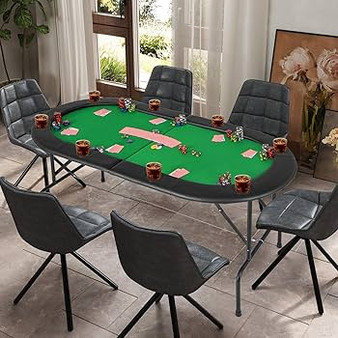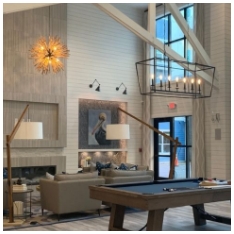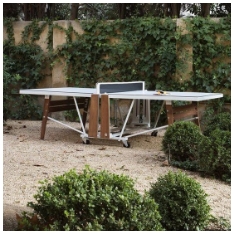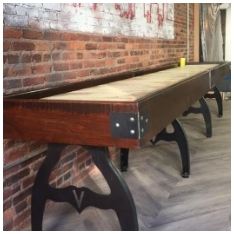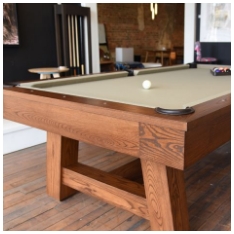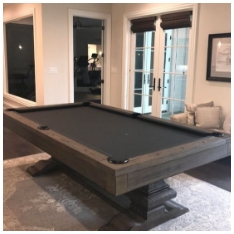Poker is more than just a game of skill and strategy it’s an experience. And the foundation of that experience often starts with the poker table itself. Selecting the right poker table layout can transform a casual game night into a professional-grade experience. Whether you are a home enthusiast or planning a dedicated poker room, understanding the nuances of table design can make all the difference.
Understanding Different Poker Table Shapes
Poker tables come in various shapes, each with its own advantages. The most common shapes are oval, round, and octagonal, and choosing the right one depends on the number of players and the space available.
- Oval Tables: The most popular for home games. Oval tables provide easy seating for 6-10 players and offer a smooth playing experience. Their elongated shape allows the dealer to reach all cards easily.
- Round Tables: Ideal for smaller groups, typically 4-6 players. Round tables foster interaction and make it easier to see everyone at the table, but may feel cramped for larger games.
- Octagonal Tables: Perfect for professional or high-end setups. Octagonal tables often accommodate more players comfortably and provide equal space for everyone, making the game feel fair and balanced.

When considering a shape, think about both the number of players and the type of game you’ll host most frequently.
Size Matters: Choosing the Right Table Dimensions
The size of your poker table is crucial for comfort and gameplay. Tables that are too small can feel cramped, while overly large tables may isolate players and make handling chips or cards awkward.
- Small Tables (4-6 players): Best for casual home games or limited spaces. They allow close interaction and are easy to store.
- Medium Tables (6-8 players): Ideal for regular home games or small poker clubs. They balance comfort and accessibility.
- Large Tables (8-10+ players): Suited for professional settings or larger poker nights. Large tables require more space but provide ample room for chips, drinks, and personal items.
When assessing table size, also consider chair placement and room dimensions. Players need enough legroom and elbow space for long sessions.
Felt and Surface Material Considerations
The playing surface can impact both the feel of the game and the longevity of your table. Most poker tables feature felt, speed cloth, or vinyl surfaces.
- Felt: The traditional choice, felt provides a classic casino feel. It is soft, smooth, and allows cards to slide easily. However, it may require regular cleaning and maintenance.
- Speed Cloth: A modern alternative to felt, speed cloth offers low friction for faster dealing and card movement. It’s durable and easy to clean.
- Vinyl or Leather Surfaces: These provide a sleek look and are highly durable, but cards may not slide as smoothly compared to felt or speed cloth.
Selecting the right surface ensures your poker table delivers both comfort and practicality, aligning with the type of games you play most often.
Player Comfort and Seating
Comfort is a critical factor that often goes overlooked. The perfect poker table layout considers not just the table itself but also the seating arrangements.
- Armrests and Rails: Many tables include padded rails or armrests. These provide support for players during long sessions and prevent fatigue.
- Cup Holders: Built-in cup holders are convenient and reduce spills, keeping the playing surface safe from damage.
- Chair Height and Style: Chairs should match the table height to maintain proper posture and comfort. Adjustable chairs are ideal for mixed groups.
Dealer Position and Chip Management
The layout should also accommodate the dealer and chip storage efficiently. A well-designed table includes a dedicated dealer spot, often slightly recessed or raised, to facilitate smooth gameplay.
- Chip Trays: Integrated chip trays keep stacks organized and reduce clutter.
- Dealer Position: Ensure the dealer has easy access to cards and chips without interrupting player flow.
A thoughtful layout improves the overall game flow and reduces frustration during intense sessions.
Style and Aesthetics
While functionality is critical, style should not be ignored. A visually appealing poker table enhances the gaming atmosphere and can even motivate players. Consider:
- Color Schemes: Felt or cloth colors can set the mood. Classic green, deep blue, or burgundy are popular options.
- Table Base: Wooden or metal bases add durability and elegance.
- Custom Logos or Designs: Some tables allow personalized designs for a unique touch, especially for home or club use.
A table that looks good boosts the experience and makes your game nights feel more professional.
Portability and Storage
Not every player has a dedicated poker room, so consider portability. Folding tables or removable legs make storage easier without compromising on playing surface quality. Lightweight yet sturdy tables are ideal for those who host occasional games in multipurpose spaces.
Budget Considerations
Finally, balance your desires with your budget. While premium tables offer the best materials and features, affordable options exist that still meet essential standards. Remember, the perfect poker table layout is about more than luxury—it’s about comfort, functionality, and a positive gaming experience.
Conclusion
Choosing the right poker table is an investment in your gaming experience. By considering table shape, size, surface material, seating comfort, dealer access, style, portability, and budget, you can select a layout that enhances every session. Implementing these tips for picking the perfect poker table layout ensures that your poker nights are enjoyable, comfortable, and professional.
